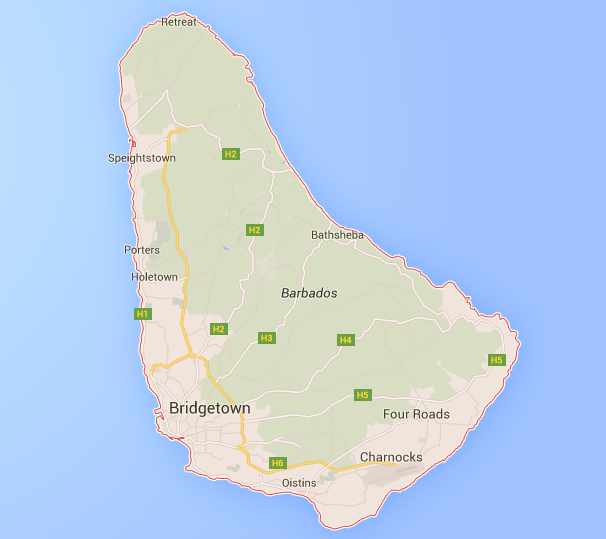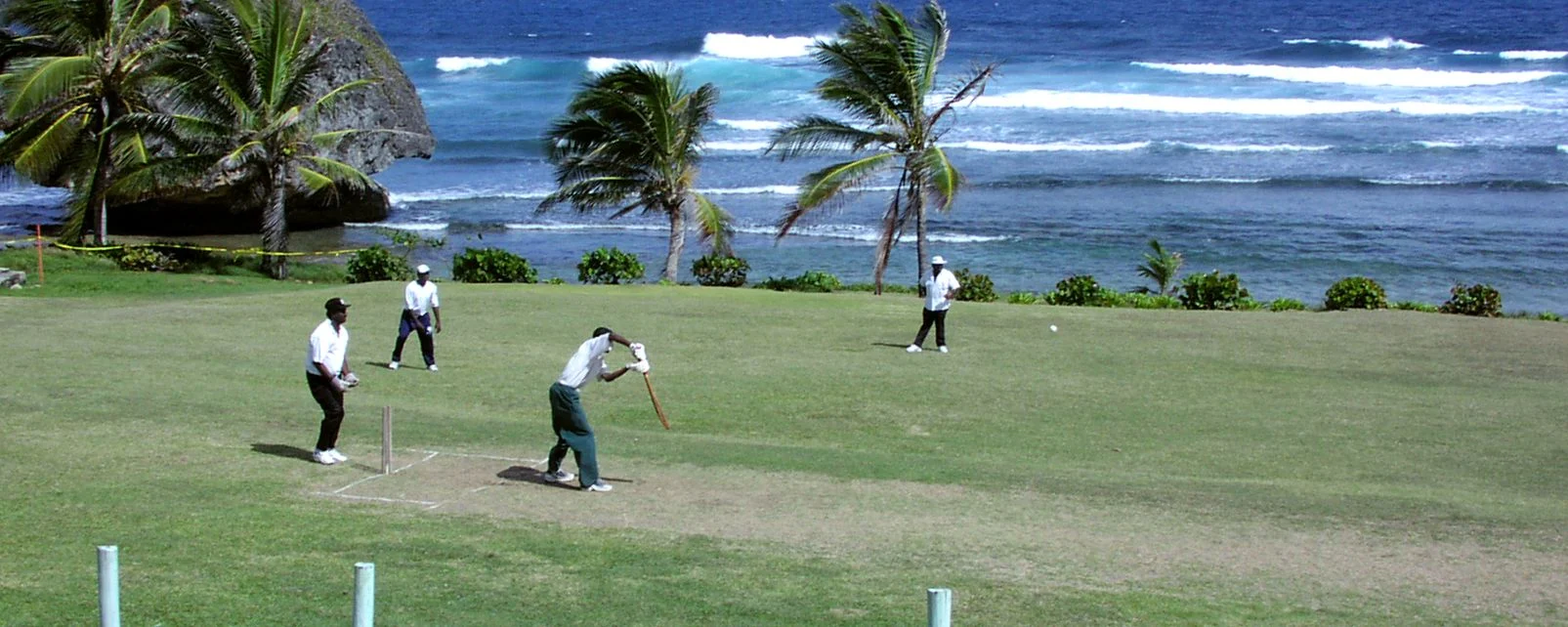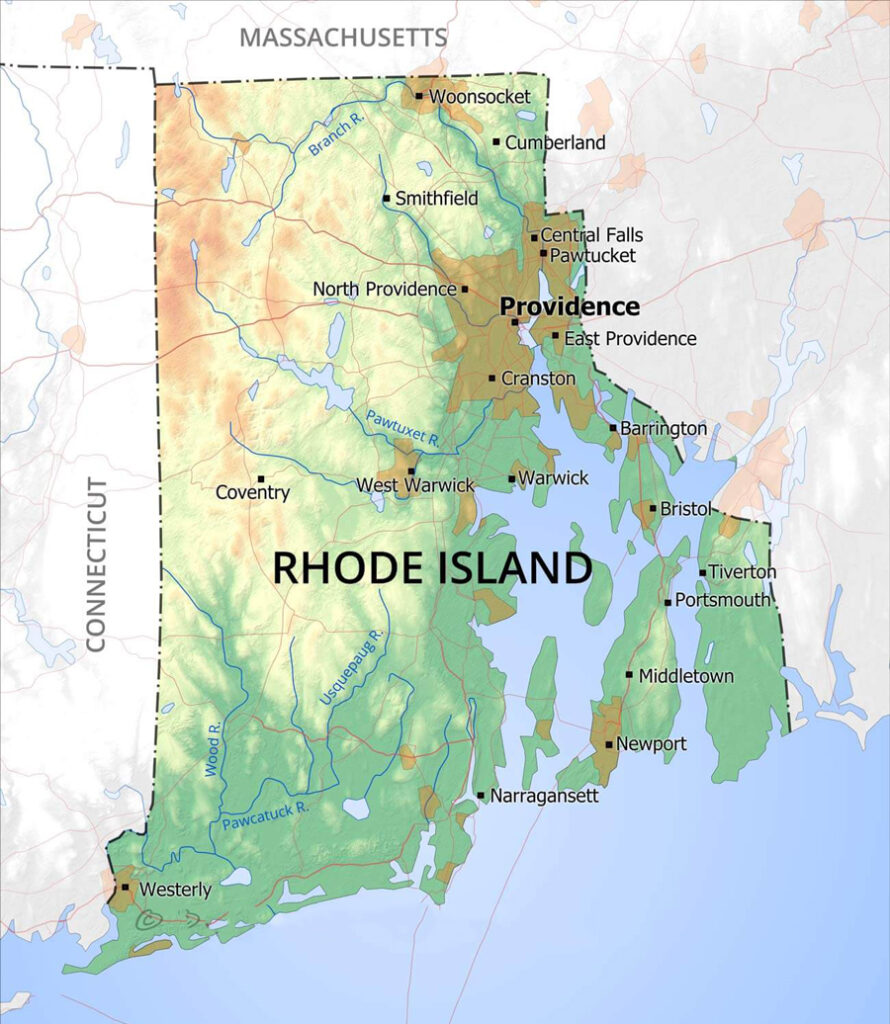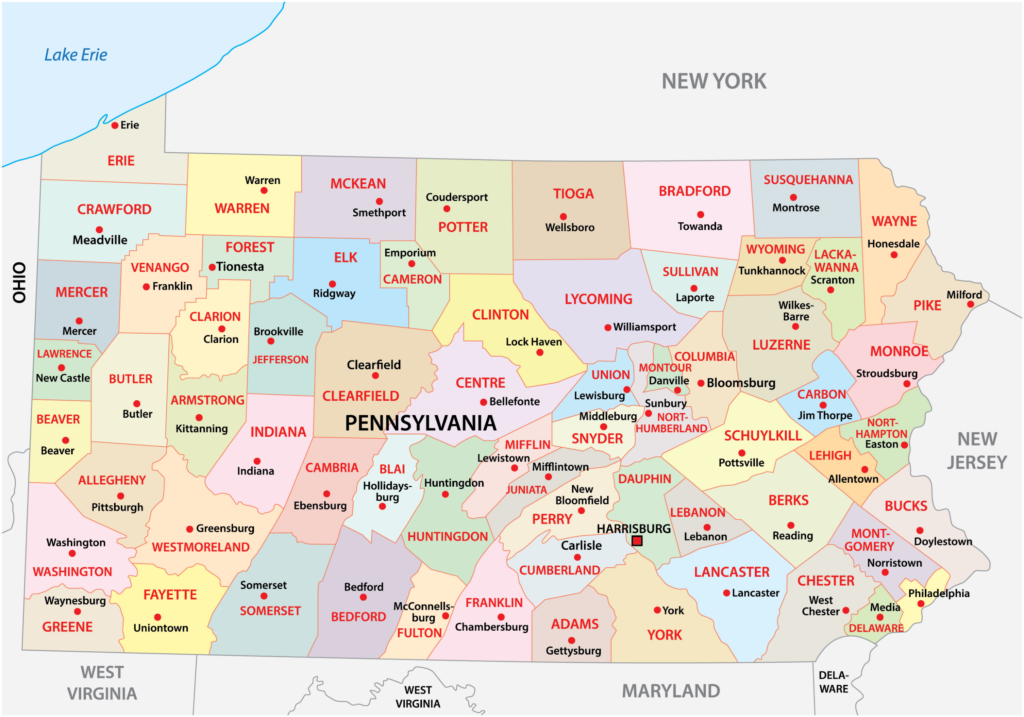Introduction
Barbados, often referred to as “The Gem of the Caribbean,” is a stunning island nation located in the Lesser Antilles of the West Indies. Known for its pristine beaches, vibrant culture, and rich history, Barbados attracts tourists from all over the world. This guide provides a detailed overview of Barbados, including its geography, history, demographics, economy, and cultural highlights. Additionally, we’ll delve into the significance of maps in understanding this Caribbean paradise.
Geography of Barbados
Location and Size
Barbados is the easternmost island in the Caribbean Sea, lying approximately 13 degrees north of the equator and 59 degrees west of the Prime Meridian. It is relatively small, with a land area of about 430 square kilometers (166 square miles), making it the 13th smallest country in the world by land area.
Physical Features
The island is characterized by its relatively flat terrain, with the highest point being Mount Hillaby at 336 meters (1,102 feet) above sea level. The island’s geography is diverse, featuring coral reefs, limestone caves, and rolling hills. The east coast is known for its rugged cliffs and Atlantic Ocean waves, while the west coast, known as the Platinum Coast, boasts calm, turquoise waters and white sandy beaches.
Climate
Barbados enjoys a tropical climate with two distinct seasons: the wet season (June to November) and the dry season (December to May). The average temperature ranges from 24°C (75°F) to 30°C (86°F) year-round, making it a popular destination for tourists seeking warm weather.
Historical Overview
Pre-Colonial Era
Before the arrival of Europeans, Barbados was inhabited by the Arawak and Carib indigenous peoples. The island was named “Los Barbados” (The Bearded Ones) by the Portuguese explorer Pedro a Campos in 1536, likely referring to the island’s fig trees with their long, hanging aerial roots that resemble beards.
Colonial Period
In 1627, English settlers established the first permanent European settlement in Barbados. The island quickly became an important sugarcane-producing colony, utilizing African slave labor. By the 17th century, Barbados was one of the wealthiest colonies in the Caribbean, exporting sugar, molasses, and rum to Europe and North America.
Independence
Barbados gained full independence from the United Kingdom on November 30, 1966. Since then, it has developed into a stable and prosperous nation with a strong emphasis on education, healthcare, and tourism.
Demographics
Population
As of the latest estimates, Barbados has a population of approximately 287,000 people. The population density is high, with about 660 people per square kilometer. The majority of the population resides in urban areas, particularly in and around the capital city, Bridgetown.
Ethnic Composition
Barbados is a diverse nation with a rich cultural heritage. The majority of the population is of African descent, accounting for about 90% of the total population. There are also small communities of people of European, Indian, and Middle Eastern descent, reflecting the island’s colonial history and its role as a hub for trade and migration.
Language
The official language of Barbados is English, which is used in government, education, and business. Additionally, Bajan Creole (Bajan) is widely spoken among the local population, characterized by its unique blend of English and African linguistic elements.
Religion
Barbados is a predominantly Christian country, with Anglicanism being the largest denomination. Other Christian denominations, such as Methodism, Pentecostalism, and Roman Catholicism, are also present. There are smaller communities of Hindus, Muslims, and Rastafarians, reflecting the island’s cultural diversity.
Economy
Overview
Barbados has a mixed economy, with tourism, offshore finance, and manufacturing being the main sectors. The island’s economy is classified as high-income by the World Bank, with a relatively high standard of living compared to other Caribbean nations.
Tourism
Tourism is the backbone of the Barbadian economy, contributing significantly to GDP and employment. The island attracts over one million visitors annually, drawn by its beautiful beaches, luxury resorts, and vibrant cultural scene. Key attractions include the historic Bridgetown and its Garrison, a UNESCO World Heritage Site, Harrison’s Cave, and the picturesque beaches of the Platinum Coast.
Offshore Finance
Barbados has developed a reputation as an international financial center, offering a range of services, including banking, insurance, and trust management. Favorable tax policies and a stable political environment have attracted numerous multinational corporations to establish operations on the island.
Agriculture
While agriculture’s contribution to the economy has declined over the years, it remains an important sector. Sugarcane, once the island’s primary export, is still cultivated, along with other crops like sweet potatoes, yams, and various fruits. Efforts are being made to diversify agricultural production and promote food security.
Manufacturing and Industry
The manufacturing sector in Barbados includes the production of electronics, chemicals, and beverages. The island is also known for its rum production, with several distilleries producing high-quality rum that is exported worldwide.
Culture
Music and Dance
Barbadian culture is rich and vibrant, heavily influenced by African, European, and Indigenous traditions. Music and dance are integral parts of Barbadian life, with genres like calypso, reggae, and soca being popular. The annual Crop Over festival, celebrating the end of the sugarcane harvest, features lively music, dancing, and colorful costumes, attracting visitors from around the world.
Cuisine
Bajan cuisine is a delightful blend of African, Indian, and British influences. Staples include flying fish and cou-cou, a dish made from cornmeal and okra. Other popular dishes are macaroni pie, fish cakes, and pudding and souse (a pickled pork dish). The island’s rum is also a cultural staple, enjoyed in various forms and cocktails.
Literature and Arts
Barbados has a rich literary and artistic tradition. Notable Barbadian writers include George Lamming and Kamau Brathwaite, who have gained international recognition for their works. The island also has a thriving arts scene, with numerous galleries and cultural institutions showcasing local talent.
Sports
Cricket is the national sport of Barbados, with the island producing several world-renowned cricketers, including Sir Garfield Sobers and Sir Frank Worrell. Other popular sports include football, athletics, and surfing, with the island’s beaches providing ideal conditions for water sports.
Maps of Barbados
Importance of Maps
Maps are essential tools for understanding the geography, infrastructure, and cultural landscape of Barbados. They provide valuable insights into the island’s physical features, transportation networks, and tourist attractions.
Types of Maps
Physical Maps
Physical maps of Barbados highlight the island’s topography, including its hills, valleys, and coastal features. These maps are useful for understanding the island’s natural landscape and planning outdoor activities.
Political Maps
Political maps show the administrative divisions of Barbados, including its parishes and major towns. Barbados is divided into 11 parishes, with Bridgetown, the capital, being a separate entity.
Road Maps
Road maps provide detailed information about the island’s transportation network, including major highways, secondary roads, and points of interest. These maps are invaluable for tourists and residents navigating the island.
Tourist Maps
Tourist maps highlight key attractions, hotels, restaurants, and recreational areas. They are designed to help visitors make the most of their stay by showcasing the island’s best spots.
Digital Maps and GIS
In recent years, digital maps and Geographic Information Systems (GIS) have become increasingly important in Barbados. These technologies provide real-time data and interactive features, enhancing navigation and planning for both residents and tourists.
Interesting Facts About Barbados
- Smallest Island in the Caribbean: Despite its small size, Barbados has a significant impact on Caribbean culture and tourism.
- First Caribbean Country to Host the Olympics: Barbados hosted the first-ever Caribbean and Central American Games in 1928.
- Land of Flying Fish: Barbados is often referred to as the “Land of Flying Fish” due to the abundance of this fish species in its waters. Flying fish is also a key ingredient in the national dish.
- Birthplace of Rihanna: The internationally acclaimed singer Rihanna was born and raised in Barbados. She is considered a cultural ambassador for the island.
- George Washington’s Visit: Future U.S. President George Washington visited Barbados in 1751, the only country he visited outside of America.
- Home to the Oldest Rum Distillery: Mount Gay Rum, established in 1703, is the world’s oldest continuously operating rum distillery.
Frequently Asked Questions (FAQs)
What is the capital of Barbados?
The capital of Barbados is Bridgetown, located on the southwestern coast of the island. Bridgetown is the largest city in Barbados and serves as the political, economic, and cultural center of the island.
What is the currency used in Barbados?
The currency used in Barbados is the Barbadian dollar (BBD), often symbolized as $ or Bds$. The Barbadian dollar is pegged to the US dollar at a rate of 2:1, making it easy for visitors to exchange and use US currency.
What language is spoken in Barbados?
The official language of Barbados is English. Additionally, Bajan Creole, a dialect of English with African influences, is commonly spoken among the local population.
What is the best time to visit Barbados?
The best time to visit Barbados is during the dry season, from December to May, when the weather is sunny and pleasant. This period is ideal for beach activities, outdoor excursions, and enjoying the island’s festivals and events.
Are there any UNESCO World Heritage Sites in Barbados?
Yes, Barbados is home to a UNESCO World Heritage Site: Historic Bridgetown and its Garrison. This site encompasses the capital city and the surrounding military garrison, showcasing the island’s colonial architecture and history.
Is Barbados a safe destination for tourists?
Barbados is generally considered a safe destination for tourists. The island has a low crime rate compared to other Caribbean nations, and the local police force is dedicated to ensuring the safety of visitors. However, as with any travel destination, it is advisable to take standard precautions and be aware of your surroundings.
What is the national dish of Barbados?
The national dish of Barbados is flying fish and cou-cou. Cou-cou is a traditional Barbadian dish made from cornmeal and okra, and it is typically served with steamed or fried flying fish, a local delicacy.
What are some must-visit attractions in Barbados?
Some must-visit attractions in Barbados include
- Harrison’s Cave: An impressive limestone cave system with stunning stalactites and stalagmites.
- Bathsheba Beach: Known for its dramatic rock formations and powerful Atlantic waves, popular with surfers.
- St. Nicholas Abbey: A beautifully preserved plantation house and rum distillery with historical significance.
- Animal Flower Cave: A sea cave with natural rock pools and breathtaking coastal views.
- Oistins Fish Fry: A lively weekly event where locals and tourists gather to enjoy fresh seafood, music, and dancing.
How do I get around Barbados?
Barbados has a well-developed transportation network, making it easy to get around the island. Options include
- Public Buses: Affordable and frequent, covering most areas of the island.
- Taxis: Widely available and convenient for short trips.
- Rental Cars: A popular choice for visitors who want to explore the island at their own pace.
- Tours and Excursions: Organized tours are available for major attractions and activities.
10. Can I drink tap water in Barbados?
Yes, tap water in Barbados is generally safe to drink. The island has a reliable water supply system, and the water is treated and regularly tested for safety. However, if you have a sensitive stomach or prefer bottled water, it is readily available.
Conclusion
Barbados is a captivating island nation with a rich cultural heritage, stunning natural landscapes, and a welcoming atmosphere. Whether you’re interested in exploring its historical sites, relaxing on its pristine beaches, or experiencing its vibrant festivals, Barbados offers something for everyone. Understanding the island through maps and facts enhances the experience, providing a deeper appreciation of this Caribbean gem. Whether you are planning a visit or simply curious about this beautiful island, we hope this comprehensive guide has provided you with valuable insights into the wonders of Barbados.
- Barbados Maps & Facts - June 29, 2024
- The Richest Countries In Europe – - June 27, 2024
- Wyoming Maps & Facts - June 26, 2024





